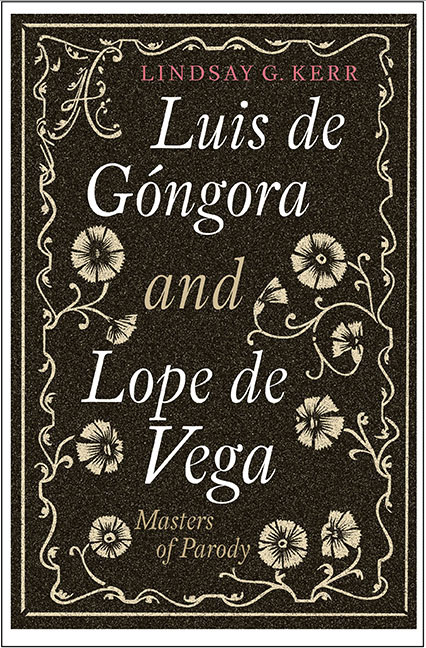2 - La fábula de Píramo y Tisbe
Published online by Cambridge University Press: 31 August 2018
Summary
La fábula de Píramo y Tisbe (1618) is, in the vein of Góngora's Hero and Leander poems, a ludic expansion of a myth whose classical origins (Ovid's Metamorphoses) and enduring popularity draw our poet like a moth to a flame. The 508 verses of Píramo y Tisbe tell the tale of two young lovers whose only original mode of communication is through a chink in the wall between their adjoining houses, although Góngora invents an African maid (‘fatal carabela’, v. 137) who ferries notes between them. The two agree to meet at the tomb of Ninus; however, a mountain lion, mouth drenched with the blood of a sheep (possibly merino), frightens Tisbe, who runs and hides, dropping her veil in her haste. The lion drinks from the fountain before tearing at the lost veil, thereby giving Pyramus the impression that Tisbe has been mauled. He then runs himself through in despair, at which point Tisbe arrives and decides also to skewer herself on his sword. Góngora's version broaches the gulf between Ovid and the increasingly stale poetics of the many sixteenth-century versions. Similarly to the myth of Hero and Leander, there was no shortage of poetic interpretations of the story of Pyramus and Thisbe in contemporary Spain. Several of these works constitute Góngora's parodic (but also emulative) targets, from the Ovide moralisé and Silvestre's La fábula de Píramo y Tisbe (1582) to the Historia de los muy constantes y infelices amores de Píramo y Tisbe (1561) attributed to Jorge de Montemayor and Antonio de Villegas’ Historia de Píramo y Tisbe (1565). The Spanish poetic lineage of Pyramus and Thisbe as catalogued by David Garrison and by Antonio Pérez Lasheras indicates that the tradition of rewriting mythology under the precept of imitatio is generally reflective of the epistemological status quo. Góngora's parodies (I include here his unfinished 1604 poem, ‘De Tisbe y Píramo quiero’) seek to redress the stagnating effect of a centuries-long privileging of imitatio over inventio. In Góngora's case, many of his unsuccessful imitators interpret his obscure language without penetrating its surface meaning, ironically reinstating the privilege of imitatio. Misinterpreting the aesthetic then leads to misinterpretation of the mechanisms by which Góngora constructs, and invites his reader to construct, meaning.
- Type
- Chapter
- Information
- Luis de Góngora and Lope de VegaMasters of Parody, pp. 51 - 86Publisher: Boydell & BrewerPrint publication year: 2017

